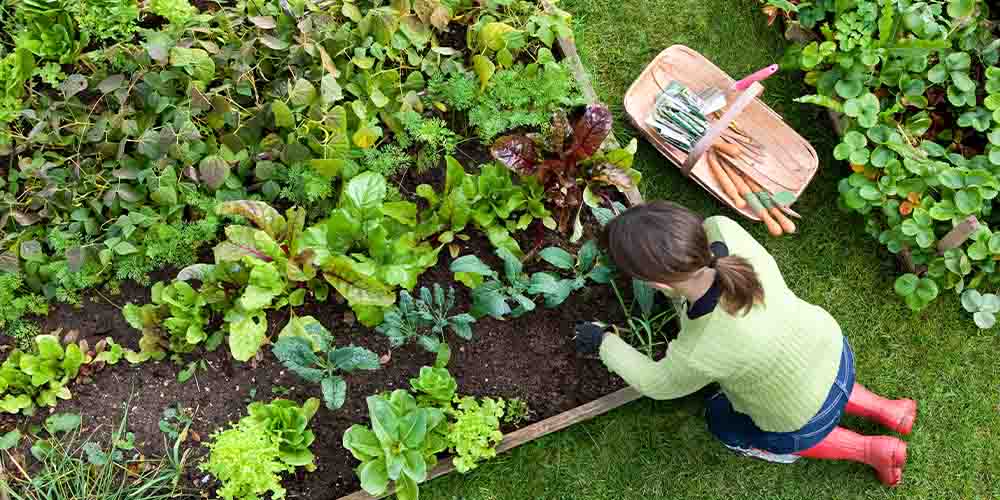Vego Garden strives for environmentally friendly and sustainable activities. Whether it's decreasing deforestation or food waste, avoiding harmful chemicals, or conserving natural resources, our goal is to make a sustainable lifestyle more accessible to everyone. Sustainable gardening is an excellent approach to teach children about the beauty of the natural world and the value of conservation efforts.
Planting your own crops using organic techniques is a step toward living a more sustainable lifestyle. However, you may always profit from using sustainable gardening methods, which will not only assist the environment but also save you money. Even if it might not seem like much on a grand scale, every action and effort is valued. The following are some innovative sustainable spring gardening strategies you may use in your garden to maintain a healthy and productive environment.
1. Reusing and Recycling Materials in the Garden
Reusing and recycling materials is an excellent method to save money while also contributing to the environment. Many gardeners choose to grow seeds inside before transferring them outdoors to get a head start on their gardening. Using egg cartons for seed starting is a low-cost solution to reuse discarded egg cartons while also saving money by not using plastic trays. As the seedlings develop, the cardboard will decompose into the soil.
Simply gather egg cartons and fill them with seed-starting mix, poking holes in the bottom to enable appropriate drainage. Window frames from vintage and trash stores may be utilized as row coverings. Old boards of wood may also be utilized to make posts. Make careful to use untreated wood, since treated wood may contain chemicals that inhibit plant development or leach into soil.
2. Try the Hugelkultur method

After assembling your Vego organic gardening raised beds, the next step is to fill them before planting. High-quality garden soil may be pricey, so many gardeners look for a cheaper option. In our experience, the Hugelkultur approach is the simplest and most cost-effective to utilize. Hugelkultur, which means "mound or hill culture" in German, is the method of piling organic garden waste and soil within a raised garden bed to resemble a mound. It not only attracts and retains moisture, but it also adds nutrients to the soil. It is particularly useful in places with poor soil retention and drainage, such as those found in metropolitan areas. Read this page for additional information on the Hugelkultur approach.
3. Try Vermicomposting
Food waste is a serious problem, with as much as 40% of the food supply being wasted. Instead of throwing food scraps, organic byproducts, and leftover vegetables into the trash, you can place them in your worm compost bin. Organic matter rotting in landfills decomposes slower, wasting nutrient products and generating methane, a potent greenhouse gas. By diverting the waste through vermicomposting, the amount of household trash and waste rotting in landfills will be reduced, which will lower greenhouse gasses in the atmosphere.
Vego Garden’s In-Ground Worm Composter is an ideal solution for beginners who seek to create compost efficiently with minimal maintenance. Designed to be installed inside existing Vego Garden beds, our product harnesses the power of worms to break down organic waste into nutrient-rich compost. Unlike above ground systems, it is odorless and hassle-free. The holes in the composter allow worms to move freely in and out of the bin to spread worm castings, which will enrich the soil. Red worms, the most efficient type in consuming food waste, can be purchased online from reputable vendors or at a worm farm.
4. Choose Native Plants

As the weather warms, many gardeners are considering which plants to cultivate. When deciding which plants to cultivate, consider acquiring native plant kinds such as trees, shrubs, flowers, and decorative grasses. They are indigenous to the region and not only adapt to the temperature and need little upkeep, but they also bring beneficial species to the garden by giving food and shelter.
Because they are suitable with local environmental circumstances, you do not have to be concerned about soil quality, fertilizer, or irrigation uniformity as much. They also assist to minimize air pollution and serve as erosion controls. To reduce watering requirements in drought-prone locations, choose drought-tolerant plants. A butterfly garden made out of native flowers is a popular technique to attract butterflies and other pollinators to your yard.
5. Reduce Chemical Usage
There is always the possibility of coming across a pest while cultivating crops. The most effective method for getting rid of them is via the use of organic controls. This is because fertilizers and pesticides may be harmful to the environment and can also kill insects that are helpful to the ecosystem. When it comes to dealing with a pest infestation, you should make use of the many solutions that are both efficient and do not involve the use of any poisonous substances. Diatomaceous earth, neem oil, and Bacillus thuringiensis (Bt) are all common approaches that are used in the process of pest control. It is possible to avoid pest issues by rotating crops, attracting insects that are helpful to the garden, and growing companion plants that are pest-repellent.